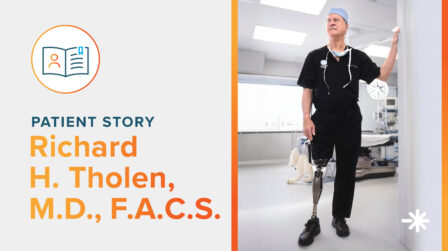Charcot-Marie-Tooth (CMT)
Inherited, genetic condition that affects the nerves in your feet, legs, hands, and arms.
Understanding Charcot-Marie-Tooth
Charcot-Marie-Tooth (CMT), also known as hereditary motor and sensory neuropathy, is one of the most common inherited neurological disorders, affecting an estimated 126,000 individuals in the United States and 2.6 million people worldwide.1
CMT is a group of inherited disorders that cause damage to the peripheral nerves. These are the nerves that transmit information and signals from the brain and spinal cord to and from the rest of the body. The damage is mostly in the nerves that control the muscles in the arms and legs.
Diagnosis
CMT occurs when there are mutations in the genes that affect the nerves that control muscles your feet, legs, hands, and arms. Symptoms of CMT typically appear in adolescence or early adulthood, but may also develop in midlife.
Signs of CMT
Symptoms usually begin in the feet and legs, but they may eventually affect your hands and arms. Signs and symptoms of CMT may include:2
- Weakness in your legs, ankles, and feet
- Smaller muscles in your legs and feet
- Foot deformities, such as high foot arches or curled toes (hammertoes)
- Difficulty walking and decreased ability to run
- Difficulty lifting your foot at the ankle (footdrop)
- Awkward or higher than normal step (gait)
- Frequent tripping or falling
- Decreased sensation or a loss of feeling in your legs and feet
As CMT progresses, symptoms may spread from the feet and legs to the hands and arms. The severity of symptoms can vary greatly from person to person, even among family members. Your physician may recommend tests including nerve conductions studies, electromyography (EMG), nerve biopsy, or genetic testing to help provide information about the extent of your nerve damage and what may be causing it.
Treatment
CMT generally progresses slowly. There is no cure, but there are treatments to help manage it.
- Foot care. Foot deformities and loss of sensation are associated with CMT. Regular foot care such as inspecting your feet, taking care of your nails, and wearing the right shoes is important to help relieve symptoms and to prevent complications.
- Physical therapy. Physical therapy can help strengthen and stretch your muscles to prevent muscle tightening and loss. Exercise and stretching at home as directed by your physician can also help and improve stability.
- Occupational therapy. Weakness in the arms and hands can cause difficulty with gripping and finger movements, such as fastening buttons or writing. Occupational therapy can help through the use of assistive devices.
- Orthotic devices. Many people with CMT may require orthotic devices to maintain function and mobility. The certified orthotists at Hanger Clinic understand how the different types of CMT present clinically and have expertise across a full range of orthotic devices, including custom ankle-foot orthoses (AFOs), to assist in daily activities such as walking and climbing stairs.
Latest Updates
Subscribe to stay up-to-date on our latest posts.


